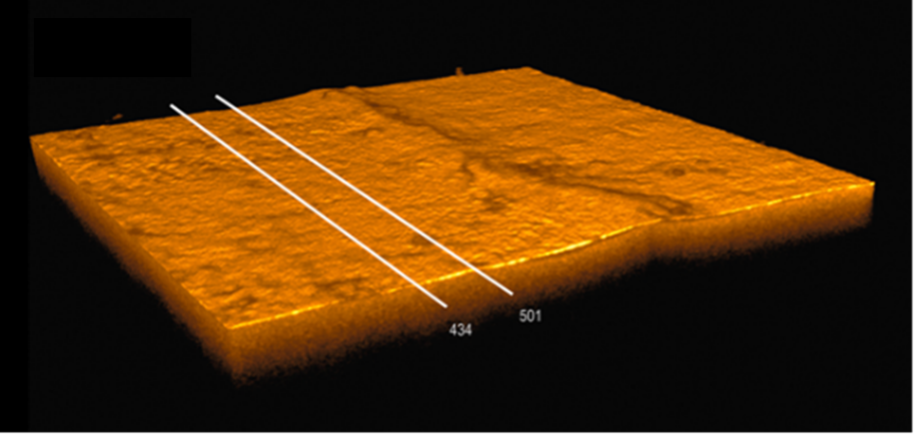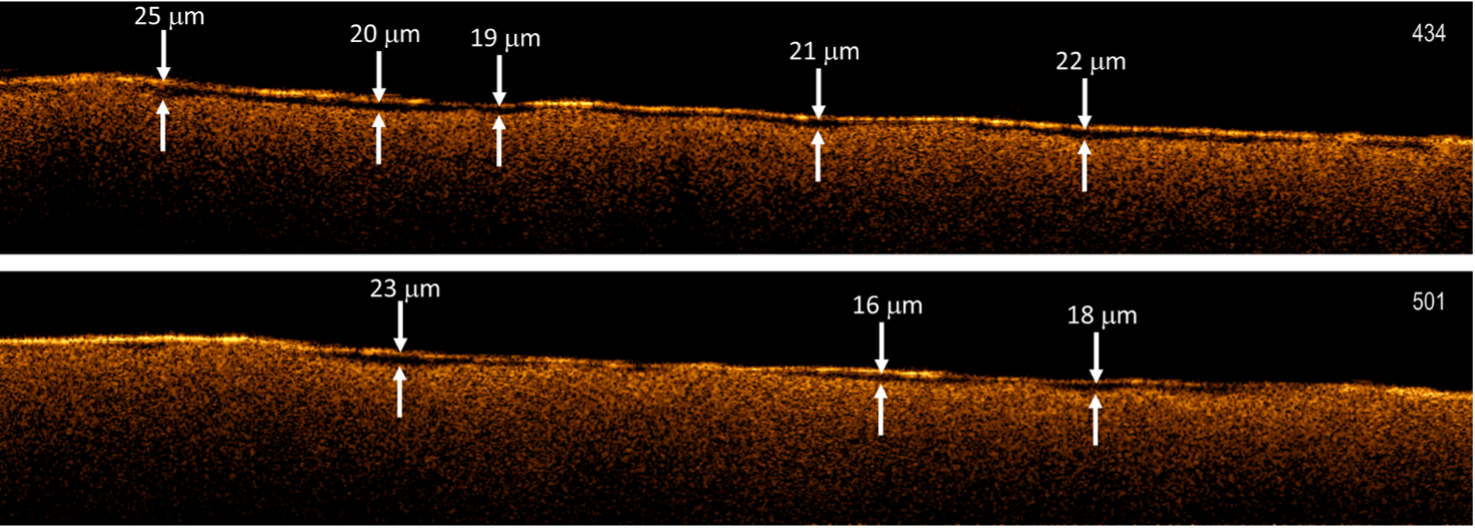OCT Spectral Domain
General information
Optical Coherence Tomography (OCT), originally developed for biomedical applications, is an interferometric imaging technique that generates high-resolution cross-sectional images of scattering or semi-transparent materials. It employs a light source in the visible or near-infrared spectral range, where the wavelength determines the depth resolution. In Heritage Science, OCT is particularly effective for non-invasive depth profiling of paint layers, offering invaluable insights during restoration processes. This technique is useful for monitoring and documenting micrometric thickness variations in material layers during interventions such as cleaning, which involves the selective removal of deteriorated components like varnishes, oxalates, or overpaints from painted surfaces.
Technical details
The CNR-INO Heritage Science Group employs two spectral-domain OCT instruments operating at 1300 nm and 900 nm, respectively. The 1300 nm system offers a maximum scanning volume of 10 mm × 10 mm × 3.5 mm, with a lateral resolution of 13 microns and a depth resolution of 5.5 microns. The 900 nm instrument provides a scanning volume of up to 6 mm × 6 mm × 2.5 mm, achieving a finer depth resolution of 3.5 microns in air. These capabilities make OCT a powerful tool for the precise, non-invasive study of cultural heritage objects.
The axial resolution values are specific for operation in the air and should be divided by the refractive index of the material being analyzed. The selection of the instrument to be used depends on the characteristics of the object to be examined.



OCT SPECTRAL DOMAIN
Potential results
The instrument outputs are tomocubes made of stratigraphic images from the analysed object. The data can be analysed in any direction (xz, yz, and xy)